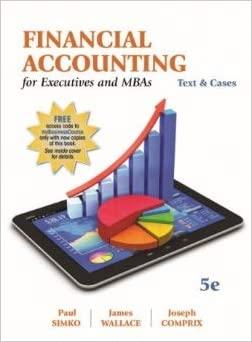Question
From its first day of operations to December 31, 2017, Campbell Corporation provided for uncollectible accounts receivable under the allowance method: entries for bad debt
From its first day of operations to December 31, 2017, Campbell Corporation provided for uncollectible accounts receivable under the allowance method: entries for bad debt expense were made monthly based on 2.5% of credit sales, bad debts that were written off were charged to the allowance account, recoveries of bad debts previously written off were credited to the allowance account, and no year-end adjustments were made to the allowance account. Campbell's usual credit terms were net 30 days, and remain unchanged. The balance in Allowance for Doubtful Accounts was $184,000 at January 1, 2017. During 2017, credit sales totalled $9.4 million, interim entries for bad debt expense were based on 2.5% of credit sales, $95,000 of bad debts were written off, and recoveries of accounts previously written off amounted to $15,000. Campbell upgraded its computer facility in November 2017, and an aging of accounts receivable was prepared for the first time as at December 31, 2017. A summary of the aging analysis follows: Based on a review of how collectible the accounts really are in the "Before January 1, 2017" aging category, additional receivables totalling $69,000 were written off as at December 31, 2017. The 60% uncollectible estimate therefore only applies to the remaining $81,000 in the category. Finally, beginning with the year ended December 31, 2017, Campbell adopted a new accounting method for estimating the allowance for doubtful accounts: it now uses the amount indicated by the year-end aging analysis of accounts receivable which provides its best estimate of "expected credit losses resulting from all possible default events." Instructions (a) Prepare a schedule that analyzes the changes in Allowance for Doubtful Accounts for the year ended December 31, 2017. Show supporting calculations by preparing a provision matrix in good form. (b) Prepare the journal entry for the year-end adjustment to the Allowance for Doubtful Accounts balance as at December 31, 2017.
Step by Step Solution
There are 3 Steps involved in it
Step: 1

Get Instant Access to Expert-Tailored Solutions
See step-by-step solutions with expert insights and AI powered tools for academic success
Step: 2

Step: 3

Ace Your Homework with AI
Get the answers you need in no time with our AI-driven, step-by-step assistance
Get Started


